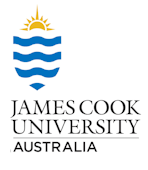
James Cook University

Creating a brighter future for life in the Tropics and beyond, through education and research that makes a difference locally, and globally.
Links
Displaying 241 - 260 of 569 articles

Would you pay to see rhinos in Australia’s savannas or forests? It’s not as crazy as it sounds – and could help save collapsing rhino populations.

Not everything humans put in the ocean is garbage. From walls of tyres to sunken sculptures, reef restoration is both a science and an art.

People are increasingly seeking out retro-style holidays, where connectivity is an afterthought.

On the golden jubilee of the discovery of Mungo Lady’s 40,000-year-old remains, we can reflect on Aboriginal Australia’s vast history, which predates the arrival of Homo sapiens in both Europe and America.

Manusia pertama yang sampai ke Australia mungkin menavigasi lautan unuk menyeberang hingga barat laut pesisir benua tersebut lebih dari 50.000 tahun lalu.

Nigeria can make some changes to harness its energy resources and lower its carbon footprint while providing power to its people.

There’s no such thing as a one-size-fits-all plan for sustainable, healthy urban living. Urban diaries help identify what works – and doesn’t work – for tropical cities like Cairns or Townsville.

When environmental needs outstrip government funds, people power steps up.

There is no way to effectively administer fertility control to thousands of horses scattered through a huge national park meaning population growth will only be limited as they run out of food

There are numerous examples of the havoc infectious diseases can play on communities that have not previously been exposed to them.

New research highlights the role of sea turtles and dugong in the dispersal of seeds and maintenance of seagrass meadows, an important marine habitat and the primary food source for both animals.

The first people to make it to Australia could have navigated their way by sea crossing, reaching the north-west coastline of the island continent more than 50,000 years ago.

Jika proyek ini berjalan seperti rencana, proyek ini akan membanjiri jantung habitat orang utan Tapanuli dan menjelajah sisanya dengan banyak jalan baru dan pembukaan jaringan listrik.

A US$1.6 billion dollar dam in Sumatra threatens the recently discovered and desperately imperilled Tapanuli Orangutan.

The federal government’s new $500 million funding package for the Great Barrier Reef seems predominantly focused on the tactics that are already being tried, without much success.

Australia loses nearly A$2 billion of GDP every year due to people with cancer leaving the workforce.

Stephen Hawking raised the public profile of grand science, and speculated about the future of artificial intelligence, as well as contacting aliens. Does science mix easily with science fiction?

Africa’s famous animal migrations are increasingly blocked by fences, erected by farmers to keep their livestock safe from disease. But a new approach aims to deliver healthy beef and healthy wildlife.

New cane toad traps that carefully imitate mating males successfully target breeding females. Males, meanwhile, will turn up for anything that sounds remotely like a toad.

Most of Australia’s plants and animals are found nowhere else on Earth. This remarkable biodiversity requires a bolder, brighter conservation vision.
